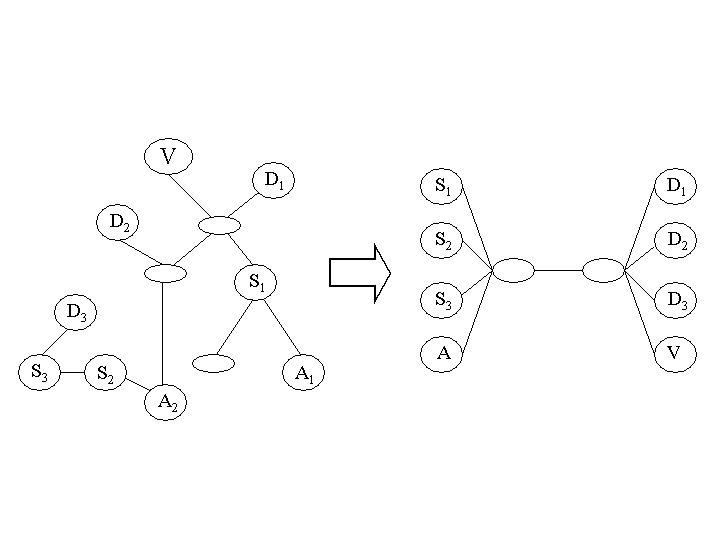dosdbell

Figure 1: Creation of a compact dumbbell topology
Description
dosdbell creates a compact dumbell topology using a distribution of
hops specified as probability density function (pdf).
The parameters of the topology are inputed from a file.
Input
The parameters of the attack tree are specified in the following
format. Link bandwidth is specified in Mbps, delays are in ms,
and starttime in seconds.
diameter bn_bw bn_delay
TCP_src, link_bw starttime
attackers rate packet_size Master starttime
finishtime
File Explanation
Line 1: Maximum number of hops, bandwidth(Mbps) and delay(ms) for the bottleneck
Line 2: Background traffic paramaters:
Number of TCP source, link_bw(Mbps) and all TCP sources start by starttime(in sec)
Line 3: Attack traffic parameters:
Number of attackers, attack rate, packet size,
presence/Absence of master, and
time(in sec) at which the attack starts.
Line 4: Simulation termination time (in sec)
The Master variable is a boolean value to indicate presence/absence (1/0) of
a master. If a master is present, then an additional delay component
due to the trigger mechanism is added.
The model assumes all hops have the same propagation delay(specified as bn_delay).
We use TCP Reno (oneway) to model background traffic.
For example:
25 10 20 # Maximum number of hops between two nodes in the original topology is 25,
# bottleneck bandwidth is 10Mbps, propagation delay is 20ms
100 0.1 20 # Hundred TCP sources each send at 100Kbps, all start before 20s
200 0.05 200 0 50 # 200 Attackers, each send at 50Kbps using 200B packets,
no master. The attack starts at 50s
150 # Simulation ends at 150s
Output
Creates a tcl file with the ns topology that can be used
directly to run the simulation.
The simulation creates a queue trace file, qtrace.tr, at the bottle neck link.
Usage
dosdbell input_parameters output_tclfile

